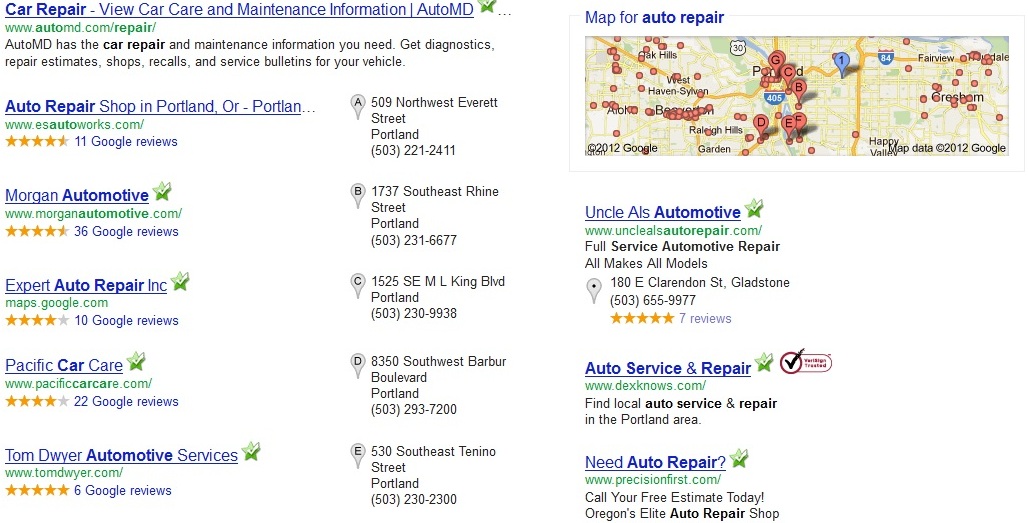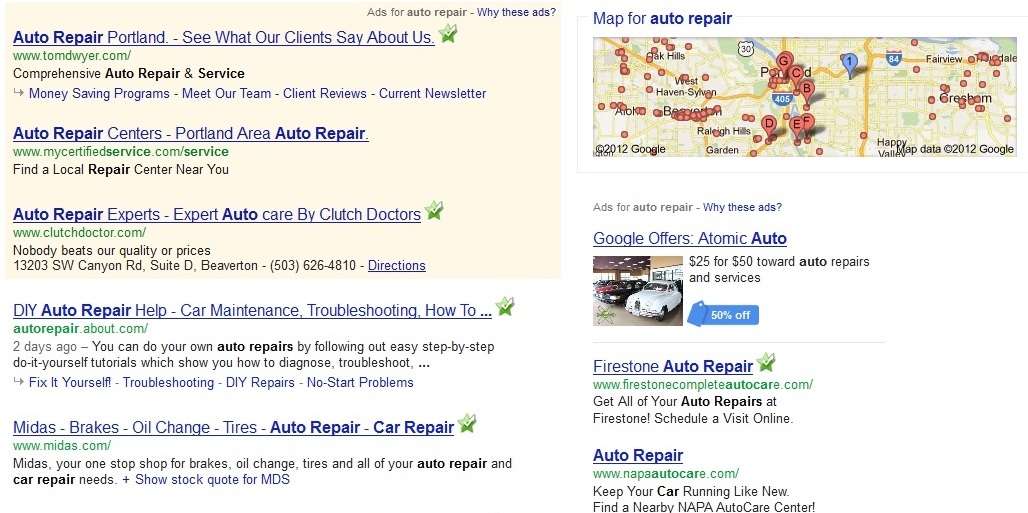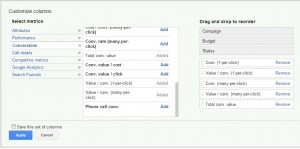There are arguments for and against paying for advertising on keyword search terms that you already rank organically for. We are in the pro “branding” camp here at TCC. Why? Because advertising gives you a level of immediate control over the page layout that organic listings cannot provide. PPC advertising is another tool to help re-enforce your brand, and keep customer engaged with your business throughout the buying cycle.
SEO is important, it is certainly an investment you should consider making in your business. However, it takes a lot of work, time, and the results are not guaranteed. When Google comes out with it’s next update (which it always will), what guarantee do you have that what “worked” for your organic rankings before, is still going to “work” now? All the website development, link building, and carefully crafted strategy is all for not, if the algorithm de-values those signals in favor of something new. Regardless of algorithm updates, one thing remains constant, money spends. It is in Google’s best interest to maintain advertising revenue, regardless of the current search algorithm. Advertising provides consistency, and consistency is crucial for small business.
Let’s consider a specific example:
While conducting a non-personalized live search in Portland, Or. for the keyword search term ‘auto repair’, the results are very interesting. Our client, Tom Dwyer Automotive Services, inc. Shows an ad for their business in the top position of the page.
Notice how the rest of the ads in the top and side positions are for large national chains, or specialized service shops. Which of the top of the page businesses “specialize” in full service auto repair, for all brands, and provide personalized services based in the local community? The top organic listings are at the bottom of the fold, and again are for a national chain, or a DIY information site. How do you brand your local small business in this environment, and compete with the big guys – You advertise!
The organic listings for the company are another matter entirely. You have to scroll down below the fold of the first page to actually find local full service general repair facilities.

The local results are perhaps the most relevant results for your query, but they are pushed down the page. You still see advertisements next to the local organic results. Even though you “rank” on Google without paying for advertising, advertisers still are competing with your brand. How does Google determine the local organic listings? It does not appear having the most, or the highest rated reviews is the only factor. Certainly, that’s part of the equation, but there also has to be a continued investment in Search Engine Optimization. Again, if the algorithm changes, the organic results will change as well, and you will have no guarantee that your local business will show anywhere on the first page.
Unless, you protect your brand with an investment in advertising.
A combined approach, using multiple media formats, including television or radio advertising, is the best long term strategy to really grow and expand your business. Once a potential customer hears or sees your ad, in this day and age, what is the primary method of engagement? Is a customer more likely to remember the phone number and immediately call, or are they more likely to conduct a search for your business on the web?
With Google incorporating customer reviews from multiple sources for local search results, no matter how compelling your initial message, your online presence is crucial to keeping that potential customer engaged through the buying cycle. What are other customers saying about your business? How does the business owner respond, or not, to negative reviews? As the business owner you don’t have control over which reviews are shown or not, but you do have control over the content of your website. If you can engage the potential customer with an ad, on the top of the page, before they may explore any potential negative reviews associated with the local organic listings, you have a chance to out-flank any potential negativity associated with your business.
Take a look at how Tom Dwyer Automotive re-enforces positive client feedback within the site. Client video testimonials, on air radio personalities personal endorsements, a vast collection of online client reviews from multiple sources, and in shop client feedback surveys. There will always be some unhappy customers, you can’t please everyone, and we all know that. By curating so many positive feedback sources, it puts one or two negative reviews in perspective. Whose perspective would you trust – A one time customer who had a negative experience because of unknown circumstances, or someone who has been a client for over a decade, and has received excellent service and advice throughout the various stages in their life?
Use multiple advertising formats to craft a message, and expand brand awareness. Then continue to use all the tools at your disposal to maintain the prospective customers engagement with your brand, throughout the buying cycle.





